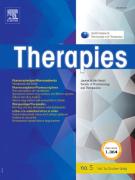The relationship between relative telomere length and anti-tuberculosis drug-induced hepatitis : A case-control study - 14/06/22

Cet article a été publié dans un numéro de la revue, cliquez ici pour y accéder
Summary |
Aim |
Anti-tuberculosis drug-induced hepatitis (AT-DIH) is a common and serious adverse drug reaction of tuberculosis treatment. Evidence demonstrated that many factors could affect the occurrence of AT-DIH, such as ageing, smoking, alcohol, oxidative stress, etc., while these factors could also promote telomere shortening. Therefore, relative telomere length (RTL) is indirectly related to the occurrence of AT-DIH. The present study aimed to explore and validate this relationship in Chinese tuberculosis patients.
Methods |
A 1:4 matched case–control study was undertaken using 202 AT-DIH cases and 808 controls. Logistic regression models were used to estimate the association between RTL and AT-DIH with odds ratios (ORs) and 95% confidence intervals (CIs). The area under receiver operating characteristic curve (AUC) was calculated to estimate the discriminative performance for distinguishing AT-DIH cases from controls.
Results |
The average RTL in AT-DIH cases was significantly shorter than that in controls (1.24 vs. 1.46, P=0.002). Patients with longer RTL were at a reduced risk of AT-DIH (OR=0.79, 95% CI: 0.66–0.94, P=0.009), and a dose-response relationship also existed between RTL and lower AT-DIH risk (P for trend=0.012). Under the optimal RTL cut-off value of 1.22, the corresponding AUCs were 0.57 (95% CI: 0.53–0.62, P=0.001) in the univariate model and 0.62 (95% CI: 0.57–0.66, P<0.001) in the multivariate model.
Conclusion |
This study showed that the shorter the RTL, the higher the risk of AT-DIH during an anti-tuberculosis treatment. The short RTL could potentially serve as a risk factor or a predictive test of the hepatotoxic risk associated with anti-tuberculosis treatments.
Le texte complet de cet article est disponible en PDF.Keywords : Anti-tuberculosis drug-induced hepatitis, Telomere length, The area under curve, Matched case–control study
Plan
Bienvenue sur EM-consulte, la référence des professionnels de santé.
L’accès au texte intégral de cet article nécessite un abonnement.
Déjà abonné à cette revue ?

